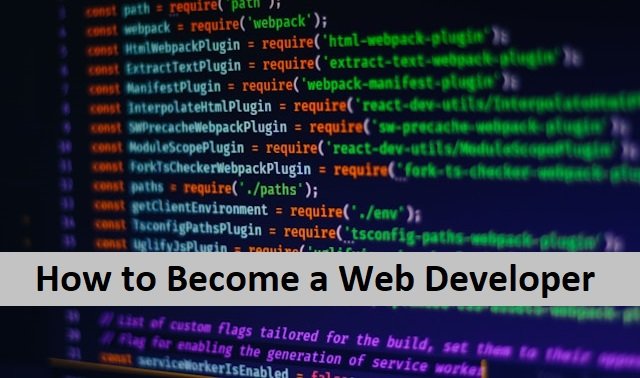The user-facing design of an E-commerce website is referred to as the User Interface (UI). A user-friendly interface is essential for any E-commerce website. Because attracting more and more buyers is the only way for a website to grow and increase revenues. However, as a new developer or designer, you must understand the distinction between designing E-commerce websites and other online stores.
This article will reveal the best practices for E-commerce user interface designs you should keep in mind when creating E-commerce UI. You can convert visitors into loyal customers by making the website design appealing and engaging. Let’s find out best practices by using UI design.
Best practices for eCommerce UI Design
Establish A Clear And Diverse Navigation
Compared to other websites, the goal of E-commerce websites is more than just attracting more visitors and likes. Their goal is to increase sales. As a result, an e-commerce website should be engaging, with clear and varied navigation. It will complete the visitor’s survey throughout the website.
Because of their complicated navigation, most well-designed websites fail to persuade people to buy. Remember, no one enjoys going through difficult shopping procedures and will give up at any stage. As a result, it is critical to keep things simple for the user. Here are a few things you should keep in mind when designing an E-commerce user interface:
- Detailed information on the items, including price, color, and size.
- How to buy the products
- Name of the brand
- Return policy of the company
- How many days will it take to deliver
- The website is asking for any extra charges or not
- How to save the items in the wishlist
- How to return to the homepage
- Reviews of the previous buyers
Engaging Home Page
When a user clicks, he first notices the home page. The primary goal of the UI design should be to provide more information to visitors. Prospective buyers spend little time on a single website and will go to another website if they need help finding clear information on the homepage. Hence, all information must be displayed on the homepage, as this is the only way to increase sales.
Product Page Navigation
E-commerce websites usually sell various products, making it vital to have separate navigation for products. This way, they will see various products available by narrowing down the page’s design.
Adding two functions will help in it; filtering and sorting. The filter will narrow the search results according to the product’s specifications. Sorting will keep the product in order according to the requirements of users.
Mobile Responsive UI Design
Well, most people today rely on mobile phones for online buying. Many bounce back due to the non-responsive website designs on mobile phones. Then why not focus here? Otherwise, you will lose hundreds of genuine customers.
Creating mobile-friendly websites is the only way out. Make your customers lazy by providing them with mobile-friendly UI designs, which make them go for purchasing even if they have more options.
Use Breadcrumbs And Search Bar To Help Shopper
E-commerce websites usually have subcategories within categories, so they need to be clarified for users. Using breadcrumbs can be of help here. It assists users in knowing where they are on the website.
A website with many products can take clients away from the relevant product they need. So when they want to go back, breadcrumbs will guide them.
Similarly, a search bar helps them find the product by writing in it, and it will take them to the required page. It saves users time and gives them suggestions based on the related keywords to quicken the process.
Use Of Landing Pages In UI Designs
Most of the time, when all the web traffic reaches the website’s homepage, they are overwhelmed with lots of product information on one page. It may lead them to leave the site, and you may lose customers.
The purpose of using UI designs is to make complex websites easily accessible for users. UI design lets e-commerce websites attract visitors to specific products they want to know about because a landing page shows information about one product, making it easier for shoppers to pay attention to it.
Simplicity Is The Winner Here
Experimentation is not an option here. The simpler an E-commerce website is designed, the more sales it will generate. No matter how better your products are, complex designs tend to lose more genuine customers.
A simple website with clear and to-the-point product information will win customers’ trust and rule the online business world. The goal is not to impress them with beautiful and innovative designs but to direct them to the right products for purchase.
Adding Lots Of Marketing UI Elements Is Not Beneficial
Marketing tactics such as pop-ups may benefit non-E-commerce websites, but these are not useful for E-commerce sites. These will divert users’ attention away from the products and harm sales. To increase sales, keep these elements off the product pages. You can include a pop-up chat option for users, which they should click to open it.
Call To Action
Every E-commerce website must have a clear and simple call to action. However, including it on every product page will be more beneficial. When a customer decides on a product, the next step is to purchase it. It should be a straightforward procedure.
Including more than one call to action can confuse users, so include only one clear and simple call to action to complete the purchase.
Add Product Images
As previously stated, an e-commerce UI-designed website prioritizes function over appearance. However, relevant product images can be beneficial to some extent. Add product images to help the customer understand because a picture is worth a thousand words. A high-quality image can persuade a visitor that this is the product he is looking for and that he should buy it.
Summing It Up
When it comes to e-commerce websites, appearance is of little importance. What matters is how well it functions as a user-friendly website. The more user-friendly an e-commerce website is, the more visitors it will receive. With so much information, most of these websites offer multiple products, which can distract or confuse visitors.
As a result, a website with multiple products should be designed so that users can easily find the relevant products. It is well taken care of by UI design. It facilitates the search by utilizing navigation functions, a search bar, and breadcrumbs. Because what matters, in the end, is the rate of profit you earns from the website.




